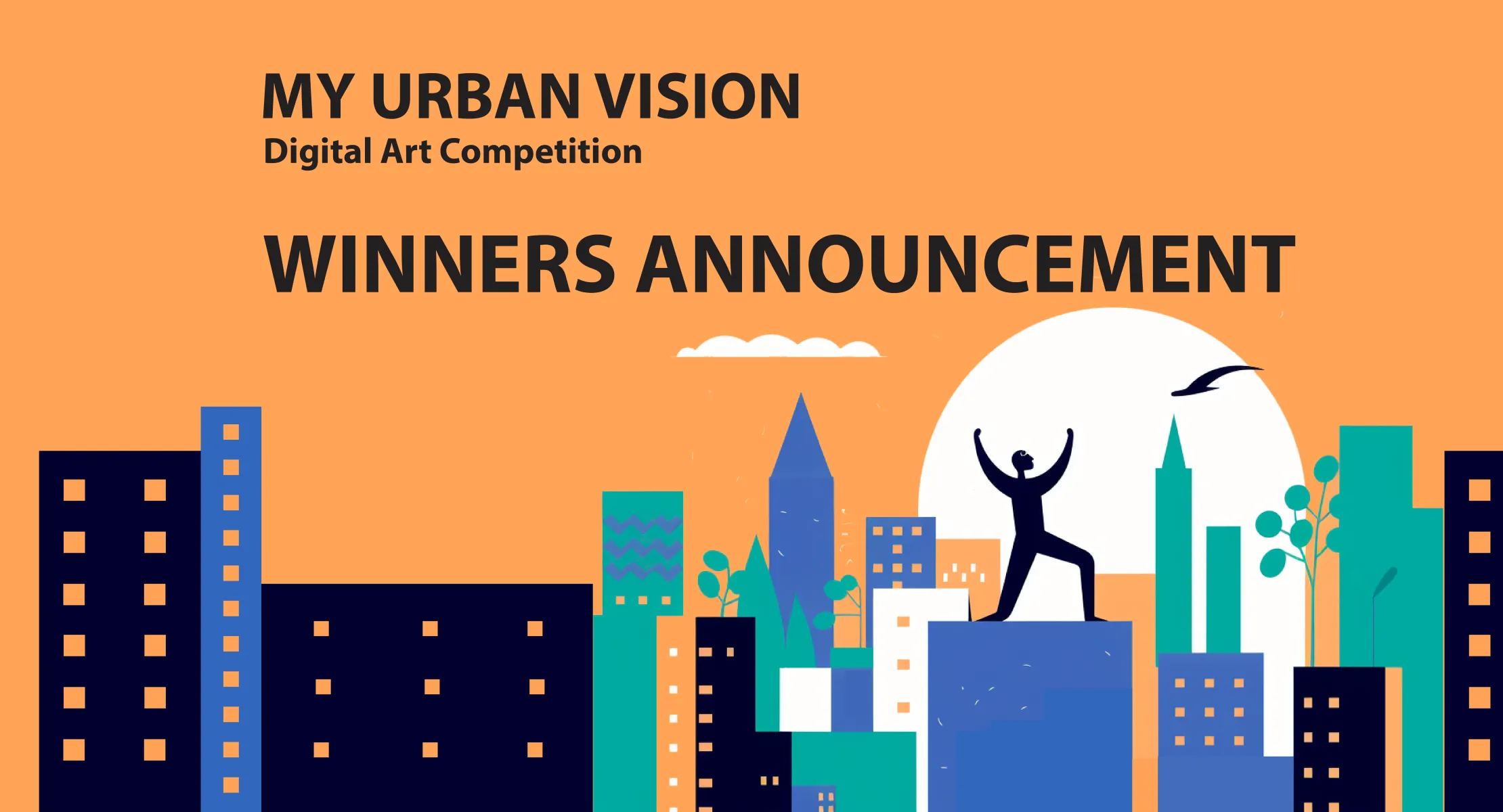
UN-Habitat is thrilled to announce the winners of the My Urban Vision digital art competition, a global initiative aimed at inspiring and engaging young creatives in envisioning the cities of the future.
The competition attracted a diverse array of submissions from 29 countries, with participants capturing the spirit of urban transformation and the vital role of communities in shaping their environments. The entries showcased a wide range of perspectives, including reimagined public spaces, innovative solutions for climate resilience and adequate and affordable housing for all, ultimately demonstrating the importance of art and culture to communicate complex ideas and inspire action.
The Winners
Category 1: Inclusive and sustainable communities
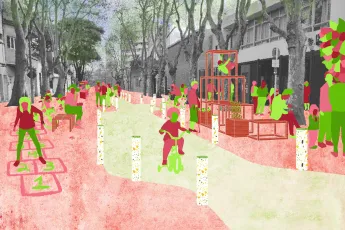
1. Paula Pedreira Del Fiol - " Ways to Escuela Ecuador"
Montevideo, Uruguay
Description provided by the participant: This artwork is the result of the Pacify Escuela Ecuador project, from Montevideo, which started with parents and Comisión Vecinal del Mercado claiming to be unhappy with the space available to wait for pick-up of their kids from school. The project is being developed by the Colectivo Ciudad Abierta and the Faculty of Psychology, UDELAR. Through art, I explored changes that could be made to the street to give children more rights to the city, such as narrowing the space for cars, adding urban furniture to act as protection barriers, creating community gardens, and adding bicycle parking areas.
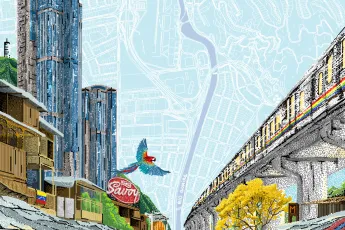
2. Silvia Mercader Ferri - "Let the river flow"
Caracas, Venezuela
Description provided by the participant: We often perceive native Venezuelans as a tourist experience, something we encounter during vacations deep within our land. However, it’s not part of our daily routine. What would happen if we incorporated some of their practices and knowledge, blended it a bit with our technology, and created a new city deeply connected to our roots, our earth, our nature? Perhaps we would start to view rivers crossing our city as a new mode of transportation, rather than a sewer (as it currently is). Maybe our architecture and urban landscape would begin to transform into something more vibrant and less cold.

3. Tawfique M - "Equitable Urban Dreams"
Dunedin, New Zealand
Description provided by the participant: My artwork represents cities as a net of interconnected spaces, highlighting cracks that symbolize urban inequities. It critiques the assumption that cities cater mainly to adult, male, white-collar, out-of-town car users, leaving women and other groups marginalized. I advocate for a balanced urban sphere shared equally by all genders, ages, and demographics. Inclusivity in urban planning is crucial for sustainability. My art calls for rethinking city structures to ensure public spaces, energy, and resources are accessible to everyone, fostering truly equitable and resilient cities.
Category 2: Climate resilience in urban areas
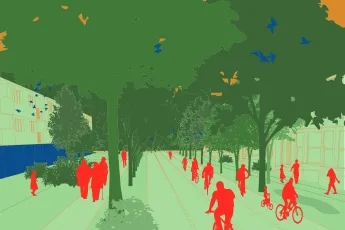
1. Svetlana Radchenko - "The Dome"
London, The United Kingdom
Description provided by the participant: The work illustrates the implementation of the urban forest concept in the existing urban fabric. Trees are the most efficient element in the urban environment because they not only improve air conditions but also provide shade, reduce the heat island effect, absorb rainwater, prevent soil erosion, and are easy to maintain. Potentially, the generous tree canopy could increase the economic activity and profitability of active fronts because it is more attractive for walking and cycling. Through that work, I wanted to emphasise the simplicity and the power of that element of a streetscape.
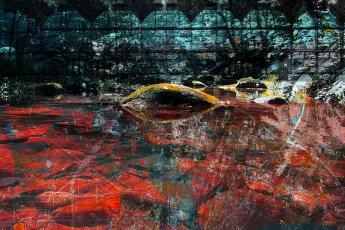
2. Jorge López Ortiz - "Red Plan"
Merida, Mexico
Description provided by the participant: Understanding the territory and linking it to urban architectural design will allow us to build new building models that respond to and contribute to the integration of ecosystem services provided by nature. Coexistence forces us to have an urgent plan for risk mitigation, a red plan.

3. Ronel Khalil Celis Jiménez - "Pon Tu Granito de Arena Para Un Mundo Mejor”
Morelos, Mexico
Description provided by the participant: This artwork was created with the sole purpose of raising awareness. Nowadays, we see an urbanized area filled with trash, lacking green spaces, and without programs to improve air and water quality or even to have renewable energy. Most importantly, we see a lack of interaction among people because they no longer go out to enjoy the environment as they did centuries ago. This led me to create this representation of what a locality would look like filled with green areas, renewable energy, and where people enjoy their daily lives filled with love, peace, and tranquility.
Category 3: Adequate housing and services for all
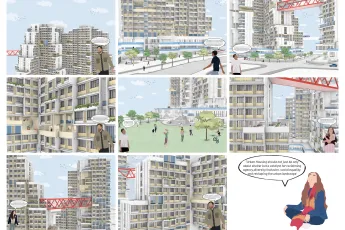
1. Vardhan Arora - "De-commodifying People: A Transgressive Approach to Social Housing"
Mumbai, India
Description provided by the participant: "Decommodifying People: A Transgressive Approach to Social Housing" rethinks urban growth to prioritize inclusivity, social integration, and equitable density. By reimagining land use and housing types, it aims to create diverse, vibrant communities that integrate various income groups and foster social cohesion. Using innovative design, technology, and community participation, it envisions resilient, sustainable homes. Shifting from profit-driven models to people-centered ones, the project creates adaptable, inclusive urban landscapes that prioritize well-being and sustainability.
Honourable Mentions
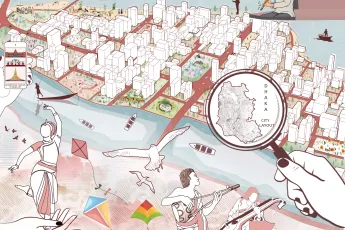
1. Nilufa Akter Juthy - "Dhaka’s Urban Tapestry"
Khulna, Bangladesh
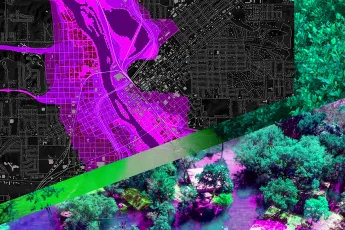
2. Jorge López Ortiz - "Ciudad riesgo /risk city"
Merida, Mexico
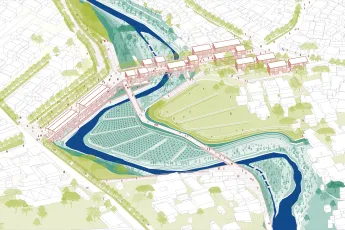
3. Ruben Garcia - "A hybrid bridge for a sustainable community”
New Orleans, The United States
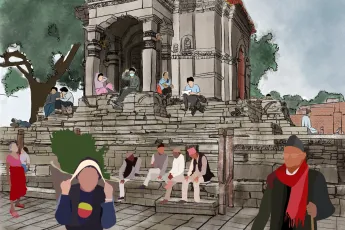
4. Shreya Singh - "Plinth-A Public Space"
Weimar, Germany

5. Helio Monteiro - "Our right to the city"
Baltimore, The United States
The Jury and Selection Process
The winners were selected by a panel of esteemed judges, including experts in urban planning and sustainable development. The jury assessed each submission based on creativity, relevance to the theme, technical execution, and the ability to provoke thought and inspire audiences
What’ Next for the Winners?
The winning artworks may be featured on future UN-Habitat publications and shared across our social media platforms, allowing them to reach a global audience and inspire others. To celebrate their achievements, we will be organizing a webinar on 15 October 2024, where the winners will have the opportunity to showcase their artwork, share their creative processes, and discuss their visions for the future of our cities.
Register for the webinar here.
We extend our heartfelt thanks to all the participants for their incredible contributions and to our partners for their support in making this competition a success.
Stay tuned to our website and social media channels for more updates and opportunities to engage with UN-Habitat’s initiatives.